
GM/Biotech Crops Report – May 2019
7th May 2019- GM/Biotech Crops Monthly Reports (BELOW) form part of BCPC’s free three-tier Biotech Crops Info service.
- This service also includes a weekly round-up of news from around the globe – see BCPC Newslink GM Crops section.
- Plus – Free access database on over 300 GM/biotech products covering 23 crops in the global market visit BCPC’s GM/Biotech Crops Manual – Register here for free access.
Already registered? Click here
GM/Biotech Crops Monthly Report May 2019
 |
Healthier oil due to gene editing Turning off a few genes in soybean has produced oil that has 80% more oleic acid, 20% less saturated fatty acids and no trans fats. Its fry life is 3 times as long as unmodified oil and it has a longer shelf life. It is now available to buy and use in America – when can we have it? More Pic: James Jordan |
|---|---|
| Dropping the ball?
The European Parliament has said that the EU is missing an opportunity due to its non-acceptance of GM and gene editing. The EU is trying to reduce the dependence of farmers on plant protection products and the parliament thinks that it is shooting itself in the foot by not embracing gene editing and GM crops. More |
 |
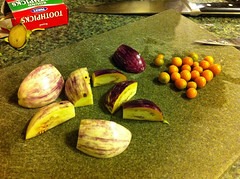 |
Nematode resistance in Solonaceae
By introducing a gene from a herb and another one from a soil fungus to tomatoes, the Chinese have produced a plant that has a high resistance to root knot nematode attack. Perhaps this could also work in potatoes. More |
| Striga control
Striga is a parasitic weed from that was once a regular feature of the BCPC Brighton Conference as it defeated all efforts to control it. Now scientists have found a way to stimulate the dormant seeds into germination when no host plants are present so that they fail to develop. The technique involves using root extracts that contain the plant hormones strigolactones. More |
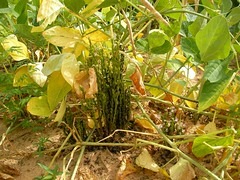 |
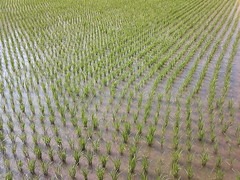 |
Drought-tolerant riceEveryone knows that rice is grown in paddy fields where the water level is carefully maintained but now scientists in Vietnam have developed transgenic rice plants that can recover from a three week period with no water at all. The report is only available in Vietnamese but can be found here. More Pic: Cosmos&Chaos |
| Bacterial leaf blight resistance in rice
Scientists in Vietnam have also identified a gene sequence in one variety of rice that confers resistance tobacterial leaf blight. They are now working on transferring this trait to other higher yielding varieties using CRISPr editing. Again the report is only available in Vietnamese but can be found here. More |
 |
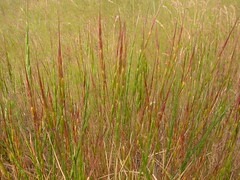 |
Genone-edited wheat in China
Jointed goatgrass is a problem weed in Chinese wheat fields. The only herbicide that is effective against it in Chinese wheat is mesosulfuron but this has a relatively long soil half life and can damage following crops. Therefore Chinese scientists have engineered wheat lines that are tolerant of ALS herbicides which means that nicosulfuron with its shorter soil persistence can also be used to control jointed goatgrass in the wheat. More |
| Bonsai for experts
Researchers at Columbia University have used CRISPr editing to produce the world’s smallest tomato plant. At 4 cms high and 8 cms wide it fruits just 2 months after planting and has a good fruit/leaf ratio. Why did they do it? They believe that it might be suitable for cultivation on space stations. More |
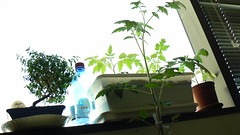 |
 |
Stealth gene editing?
CRISPr editing is not accepted everywhere because it can lead to off-target mutations and the introduction of foreign DNA but now a new technique has been developed where pre-assembled cassettes of ribonucleoproteins are introduced into zygotes with no DNA present. When the regenerated plant is grown on, was it edited or was it achieved by natural cross-breeding? More Pic: Sanjeev_cdas |
| Bananas at risk
Panama disease attacks bananas and back in the 1800s most banana plantations were wiped out. A banana variety grown at Chatsworth house in the Peak District called Cavendish was found to be resistant to Panama disease and now 99% of exported bananas are of the Cavendish variety. However, a new strain of Panama disease (TR4) has overcome the Cavendish resistance and so now the race is on to engineer in new resistance. Some promising developments are reported here. Pic: Neil Turner |
|
 |
More oil in seeds
Many crops are grown for the seed oil that they produce and now researchers in Singapore have discovered the gene that regulates seed oil content. Modification of this gene has produced plants that have seeds with 15% more oil in them. It has only been done with Arabidopsis so far but could have huge implications for oilseed rape, soybean, sunflower and for biofuel production. More Pic: Isabelle Dsaut |
THE LATEST ADDITIONS TO THE GM/BIOTECH DATABASE ARE:
• RF3 – oilseed rape with tolerance of glufosinate approved for food and feed use in China and for food use in Taiwan.
• 4114 – maize with Lepidopteran and Coleopteran insect resistance and tolerance of glufosinate approved for food and feed use in China.
• MON88302 – oilseed rape with tolerance of glyphosate approved for food and feed use in China.
• DAS44406-6 – soybean with tolerance of glyphosate, glufosinate and 2,4-D herbicides approved for food and feed use in China.
• SYHT02H – soybean with tolerance of glufosinate and mesotrione herbicides approved for food and feed use in China and for food use in Indonesia.
• New event: FAD2KO – soybean with modified oil content approved for food and feed use in America.
• DAS40278 – maize with tolerance of 2,4-D herbicide approved for food and feed use in China.
• FG72 – soybean with tolerance of glyphosate and isoxaflutole herbicides approved for food and feed use in China.
• MON88702 – cotton with Hemipteran insect resistance approved for food and feed use in Japan.
FOR INSTANT ACCESS TO GM BIOTECH MANUAL CLICK HERE (Registration required)
Already Registered? Click here to access


